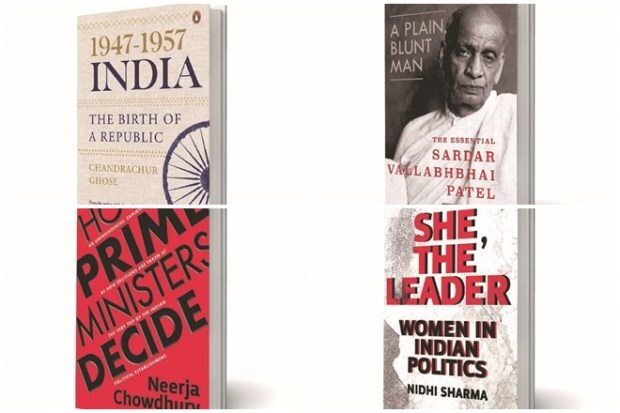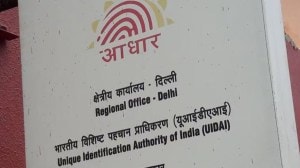Compiled by Kunal Doley
Shunting the Nation
By Aniruddha Bose
Speaking Tiger Books
The 1939-1949 period was the most turbulent decade in modern Indian history—it saw the tumult of World War II, the unrest during the Quit India movement and the final phase of the freedom struggle, and the horrors of Partition. While most studies focus chiefly on the defining contributions of the Indian nationalist leaders and the role played by the British, it is also important to record the efforts of millions of others in meeting the enormous challenges of the period. Shunting the Nation records the contribution of the workers—men, women and children—who ensured the smooth functioning of the railway-based travel and communication system in the subcontinent, even as regimes changed, new borders were drawn and everything seemed to be falling apart.
EMPIRE BUILDING: THE CONSTRUCTION OF BRITISH INDIA: 1690–1860
By Rosie Llewellyn-Jones
Penguin Random House
Empire Building is a new account of the East India Company’s impact on India, focusing on how it changed the subcontinent’s built environment in the context of defence, urbanisation and infrastructural development. Rosie Llewellyn-Jones examines these initiatives through a lens of ‘political building’ (using Indian contractors and labourers). Railways, docks, municipal buildings, Freemasons’ lodges, hotels, race courses, barracks, cemeteries, statues and canals—everything the British erected made a political statement, even if unconsciously. This book is concerned less with architectural styles, more with subtle infiltration into the minds of those who saw and used these structures. It assesses, in turn, Indian responses to the changing landscape.
1947–1957, INDIA: THE BIRTH OF A REPUBLIC
By Chandrachur Ghose
Penguin Random House
Opening a window to the first decade after India attained independence, this book brings to light many complex ideas that remain undocumented to date— from the transfer of power and the framing of the Constitution to the complex ideological agreements/ disagreements among political leaders between the Centre and various states post 1947. It looks at the relationship between the Indian National Congress and other political parties, especially, the Communist Party of India; and India’s close friendship with the USSR, among others—and how these dynamics were responsible for making and ‘unmaking’ India. This book brings to light all these episodes.

How Prime Ministers Decide
By Neerja Chowdhury
Aleph Book Company
India’s prime ministers have taken decisions that changed the course of the country’s history. This book by Neerja Chowdhury, an award-winning journalist and political commentator, goes beyond the news headlines to provide an eye-opening account of how some of the most important political decisions in independent India were taken. The author analyses the operating styles of the country’s prime ministers through the prism of six decisions of historic significance. Based on hundreds of interviews that the author conducted with prime ministers, key figures in the political establishment, bureaucrats, aides, policymakers and even fixers—the book provides remarkable insights that have been gleaned over 40 years of high-level reporting on the national political scene. How Prime Ministers Decide is an unparalleled book about modern Indian politics that will change the way we view how prime ministers govern the country.
She, the Leader: Women in Indian Politics
By Nidhi Sharma
Aleph Book Company
Politics is still considered an unusual career choice for Indian women. This is perhaps why there are just 81 women MPs in the 17th Lok Sabha (2019–24), constituting only 15% of the strength of the Lok Sabha today. Yet, though small in number, these leaders have brought a unique sensitivity to policy-making in India and continue to inspire younger women to become the next generation of political leaders. In She, the Leader: Women in Indian Politics, Nidhi Sharma profiles 17 trailblazing women politicians who have fought social inequalities and patriarchal attitudes and created their own brand of politics in the national discourse.
A Plain, Blunt Man: The Essential Sardar Vallabhbhai Patel
Edited by Urvish Kothari
Aleph Book Company
Sardar Vallabhbhai Patel was one of India’s most prominent founding fathers. A lifelong Gandhian and Congressman, he is remembered till today for the major role he played in the country’s struggle for freedom, and during the tumultuous early years of the newly independent nation, the sagacity with which he dealt with the accession and integration of the princely states with the Indian Union, the banning of the RSS after the assassination of Mahatma Gandhi, and the firmness with which he managed the breakdown of law and order after Partition. This anthology brings together his key writing and thinking on a variety of subjects including the accession of princely kingdoms, Indian secularism, the need to protect the interests of minorities, his differences with Nehru, his reverence for Gandhi, his distaste for sectarian politics and his belief in the idea of a plural India, among many others.
ON BEING INDIAN
By Amit Chaudhuri
Westland Books
Originally a talk delivered at Jamia Millia Islamia University, New Delhi, in February 2020, and then published as an essay in Social Research Quarterly the following year, On Being Indian is many things. On one level, it is a record of the various events and utterances that led up to and characterised the protests against the Citizenship Amendment Act in India. On another level, it questions, and shows us the limited value of, dichotomies such as the secular and the religious. The protests were an occasion for these humanist binaries to be dismantled exuberantly, often by thinkers who emerged at the time not from academic institutions but from diverse walks of life.
A Constitution to Keep: Sedition and Free Speech in Modern India
By Rohan J Alva
HarperCollins
When we think of the Indian Constitution, we think of the glorious chapter on fundamental rights which guarantees paramount civil liberties such as freedom of speech. But there is also a tension, because freedom of speech is compelled to co-exist with laws such as sedition—contained in Section 124A of the Indian Penal Code (IPC). In 2021, numerous individuals petitioned the Supreme Court to take sedition off the law books. But what is sedition? What is its provenance? How was sedition used in colonial India against nationalist leaders? Is there any constitutional justification for its continuance? In A Constitution to Keep, Rohan J Alva answers these timely and relevant questions which every Indian should be asking. The book also makes a case for why political speech must be constitutionally protected and how the Supreme Court can do this while ensuring the purity of political discourse.
Jallianwala Bagh, 1919: The Real Story
By Kishwar Desai
HarperCollins
It has been a century since the massacre at Jallianwala Bagh, but its horrors have not been forgotten. What was the catalyst for the events of that day and how did it become a turning point in India’s struggle for independence? Why did the British feel the need to impose martial law on Amritsar, which had shown little inclination for violence, despite provocation? What do we know about the individuals whose lives spun out of control on April 19, 1919, never to recover? Why did the people of Punjab suffer barbaric punishments, including public flogging, torture and even bombing, unknown to the rest of the world? These are the questions fuelling the research that eventually gave shape to this meticulous and determined reconstruction of that crucial day, and the events that followed. Based on the reports of the Hunter Committee and the Indian National Congress, as well as other historical documents, Jallianwala Bagh, 1919: The Real Story provides a sharp analysis of General Dyer’s actions and their fallout—the official narrative and the Indian counter-narratives.
Revolutionaries: The Other Story of How India Won Its Freedom
By Sanjeev Sanyal
HarperCollins
The history of India’s struggle for freedom is usually told from the perspective of the non-violent movement. Yet, the story of armed resistance to colonial occupation is just as important. Names such as Vinayak Savarkar, Aurobindo Ghosh, Rashbehari Bose, Bagha Jatin, Sachindra Nath Sanyal, Bhagat Singh, Chandrashekhar Azad and Subhas Chandra Bose are still widely remembered. Their story is almost always presented as acts of individual heroism and not as part of a wider movement that had any overarching strategy or significant impact on the overall struggle for independence. In reality, the revolutionaries were part of a large network that sustained armed resistance against the British Empire for half a century. Revolutionaries tells their story, one that is replete with swashbuckling adventure, intrigue, espionage, incredible bravery, diabolical treachery and shockingly unpredictable twists of fate.








